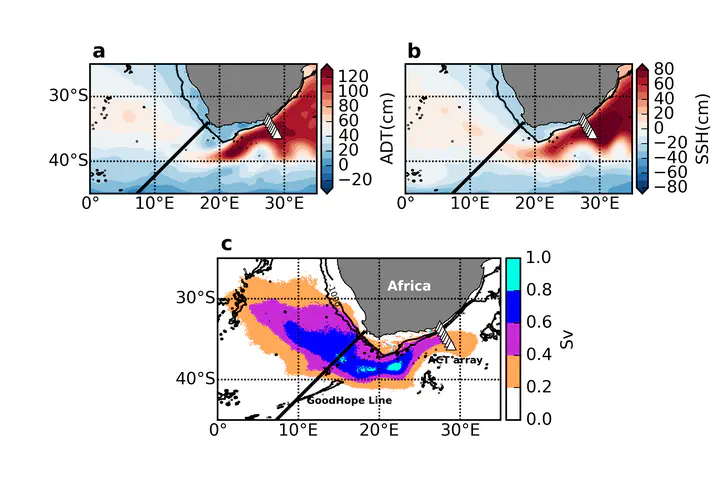Quantifying Agulhas Leakage in a High-Resolution Climate Model

Abstract
The leakage of warm and salty water from the Indian Ocean via the Agulhas system into the South Atlantic may play a critical role in climate variability by modulating the buoyancy fluxes associated with the meridional overturning circulation (MOC). New climate models, such as the Community Climate System Model, version 3.5 (CCSM3.5), are now able to resolve the Agulhas retroflection and constrain the inertially choked Agulhas leakage to more realistic values. These ocean-eddy-resolving climate models are poised to bolster understanding of the sensitivity and influence of Agulhas leakage in the coupled climate system. Here, a strategy is devised to quantify Agulhas leakage in CCSM3.5 by applying an offline Lagrangian particle-tracking approach, finding a mean interbasin transport of 11.2 Sv (1 Sv ≡ $10^{6} m^{3} s^{−1}$). It is shown that monthly mean outputs can be used to produce a reliable time series of Agulhas leakage variability on longer-than-seasonal time scales (correlation coefficient r = 0.88; p < 0.01) by comparing to a parallel simulation that archives daily mean fields every 5 days. The results show that Agulhas leakage variability at longer-than-seasonal time scales is less sensitive to the temporal resolution of the velocity fields than is the mean leakage transport.